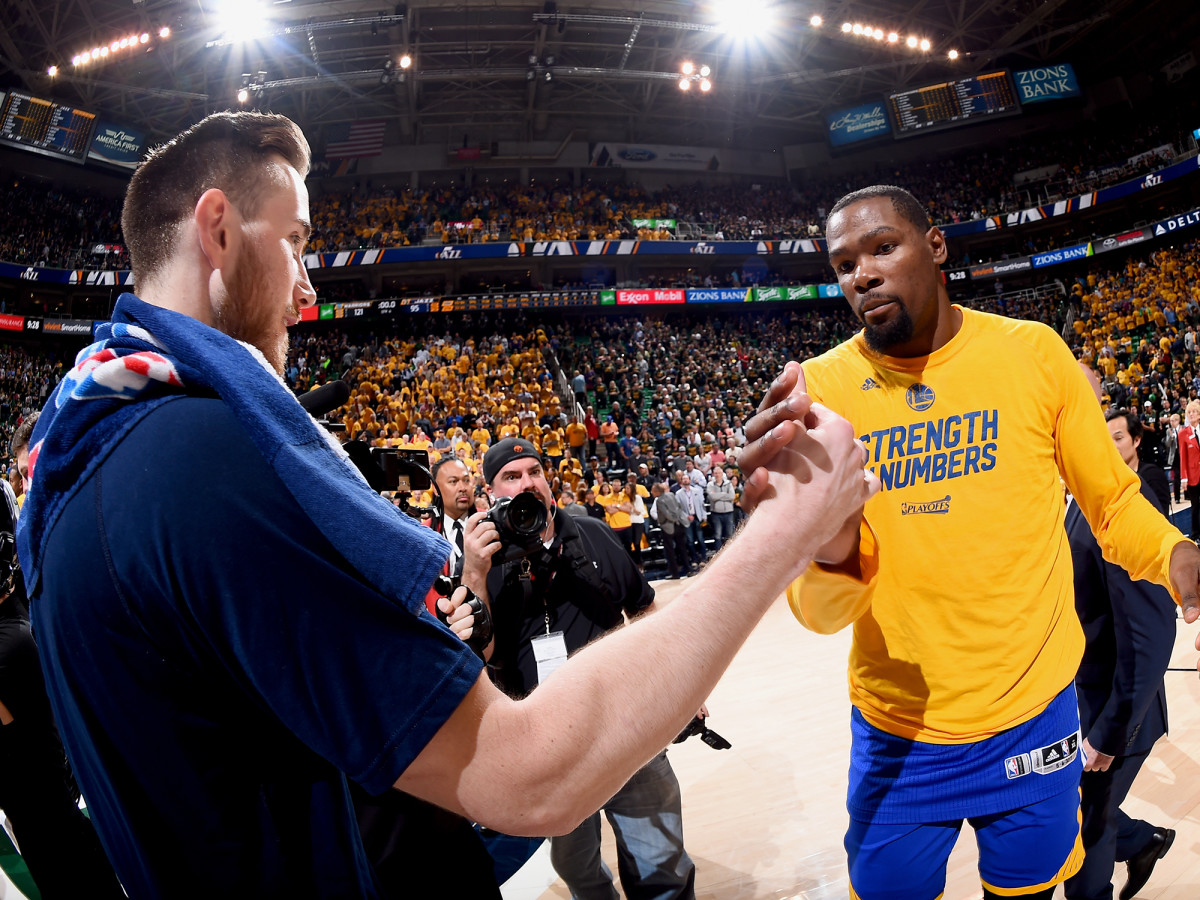2017 NBA Free Agency Primer: The Craziest Part Of The Calendar

The craziest portion of the NBA calendar is also its most revelatory. Free agency, beyond its landscape-shifting intrigue, offers a piercing look into a player’s motivations. Ask a free agent—or his representative, his teammates, his family, or his friends—where he intends to sign and you might hear bits of his thought process. Part of him might be interested in joining that contender across the way just as another part can’t imagine leaving his previous team. Choice becomes the clearest act of expression. Competing desires are boiled down to a final judgment: once finances, locale, culture, prestige, and basketball preference are accounted for, every player tells us something about himself through where he chooses to play.
2017 NBA Draft Grades: Best And Worst Picks
These decisions are so anticipated in part because they are so infrequent. Between rookie contracts, restricted free agency, and extensions, a star might only be a true free agent a few times in his career. Gordon Hayward has played seven years in the league and only now will have the power to actually pick his team. Should he opt to remain in Utah, that itself will speak volumes. If he instead leaves for Boston or Miami, that, too, would be telling.
The basketball world learned something about Kevin Durant when became a Warrior, just as it learned something about LaMarcus Aldridge in his signing with the Spurs and DeAndre Jordan when he agreed with the Mavericks before returning to the familiarity of the Clippers. We’ve spent almost a decade watching Hayward play and venturing to understand him. He has been interviewed hundreds of times. Come July, Hayward will tell us something more definitive than even a candid sound bite ever could.
Whatever Hayward decides, his selection needn’t be moralized. Re-signing with the Jazz doesn’t dictate whether Hayward is a good person; it only conveys something specific about his professional wants. It’s not wrong to value a reunion with a coach like Brad Stevens or to appreciate the different sorts of opportunities he might find elsewhere.

And in the process of making his decision, Hayward will help sketch out the currency of those teams vying for his services. There is a consensus of respect throughout the league for what Miami, for example, accomplished last season. How far that gets the Heat in talking with Hayward and Blake Griffin is instructive in its own way. Teams weigh carefully the cost and benefit of every win.
The NBA’s perverse incentive structure took lottery weight away from a Miami team that played above its talent level last season, but perhaps through the intangible appeal of free agency it might reclaim some of that benefit. Getting in the room with a highly coveted free agent means something. Whether it means enough for borderline teams like the Heat to compete where other franchises might tank hinges on redeeming more from those meetings than the nod of a news cycle.
Teams on the whole will have to be choosier than they were last summer, which in itself is a sort of messaging. Last summer’s cap spike—the unprecedented bump that left even teams like the Warriors with room to sign max-level players—turned free agency into a free-for-all. Not only is there no such spike this summer, but teams have been braced to expect a salary cap $2-3 million lower than was initially projected.
2017 NBA Draft Grades: Best And Worst Picks
This will force concessions from teams eager to make moves. Freeing up the requisite room to pursue a high-impact player might now mean trading off a perfectly useful one. That won’t deter a deep, star-hungry outfit like the Celtics, but even that seemingly small adjustment could complicate plans across the league. Not every team has good players on sheddable salary to spare. Certain signings would then come at cost—a matter that can only be resolved by prioritizing players and making hard, concrete choices. There is press conference platitude, there is reported rumor, and then there is the practical reality of what teams actually do with their money. Discerning fans should listen to everything, but the money most of all.
If Kevin Durant follows through on his reported intention to re-sign with the Warriors at a sub-max rate (one that fits into a salary cap exception rather than demanding actual cap room), he will have made a meaningful ($4 million), functional sacrifice for the purpose of keeping a great team together. When the Nets eat into their cap space by absorbing Timofey Mozgov’s ridiculous contract, they tell you the trouble that D’Angelo Russell might be worth. That Pau Gasol gave up a $16.2 million option with the intent to re-sign with San Antonio for a lower annual figure affirms everything we know about the Spurs mystique. Should the Hawks balk on offering Paul Millsap a five-year deal—which at the maximum rate would be worth more than $200 million—it might signal the start of an unwitting rebuild. Teams in general want to spend less and players in general want to make more. Every dollar between them, given or taken, carries a message beyond any estimation of worth.
